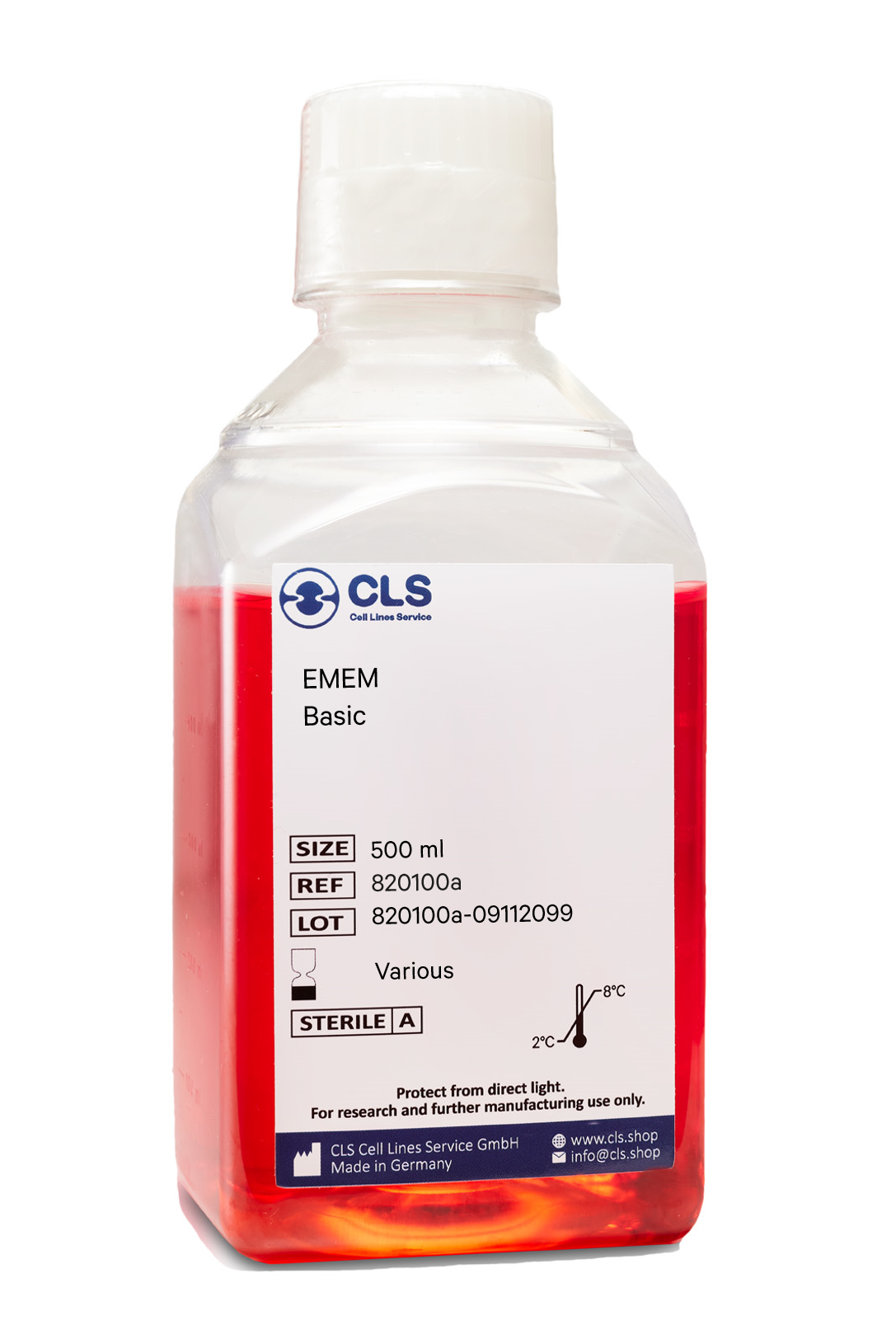EMEM (MEM Eagle), w: 2 mM L-Glutamine, w: 1.5 g/L NaHCO3, w: EBSS, w: 1 mM Sodium pyruvate, w: NEAA
One of the most widely used synthetic cell culture media is Minimum Essential Medium Eagle (MEM). Developed by Harry Eagle, this medium was first introduced in 1959 and has since become a popular choice for various cell types grown in monolayers and adherent cell lines.
This EMEM medium consists of 2 mM L-Glutamine, 1.5 g/L NaHCO3, EBSS, 1 mM Sodium pyruvate, and NEAA.
What's in EMEM?
EMEM is a modified version of Eagle's minimum essential medium, containing Earle's Balanced Salt Solution, non-essential amino acids, L-glutamine, sodium pyruvate, and sodium bicarbonate. It's important to note that this reduced level of sodium bicarbonate (NaHCO3, 1.5 g/L) is intended for use in 5% CO2 in the air. To maintain its effectiveness, storing the medium at two °C to 8°C in the dark when not in use is recommended.
What is EMEM used for?
Eagle's minimal essential medium (EMEM) is a cell culture medium that can maintain cells in tissue culture. The medium contains higher concentrations of amino acids, allowing for a more accurate approximation of the protein composition of cultured mammalian cells. EMEM may be used to cultivate various cells, including fibroblasts, human liver cancer cell line (HepG2) cells and human fetal brain progenitor-derived astrocyte cells (PDA). It is typically used in the presence of fetal bovine serum (FBS), calf, or horse sera.
How is EMEM different from other cell culture media?
While EMEM and Dulbecco's modified Eagle's medium (DMEM) share some similarities, they also differ. Both media lack protein and contain the amino acids, salts, glucose, and vitamins required to provide a cell with energy and maintain it in tissue culture. However, the DMEM formulation is modified to contain up to four times more vitamins and amino acids and two to four times more glucose than EMEM. It's worth noting that EMEM is also different from the original MEM formulation.
Quality control
- pH = 7.2 +/- 0.02 at 20-25°C.
- Each lot has been tested for sterility and absence of mycoplasma and bacteria.
Maintenance
- Keep refrigerated at +2°C to +8°C in the dark. Freezing and warming up to +37° C minimize the quality of the product.
- Do not heat the medium to more than 37° C or use uncontrollable sources of heat (e.g., microwave appliances).
- If only a part of the medium is to be used, remove this amount from the bottle and warm it up at room temperature.
- Shelf life for any medium except for the basic medium is 8 weeks from the date of manufacture.
Composition
| Components | mg/L | |
| Inorganic Salts | Calcium chloride x 2H2O | 264,92 |
| Magnesium sulfate | 97,67 | |
| Potassium chloride | 400,00 | |
| Sodium chloride | 6,800.00 | |
| Sodium dihydrogen phosphate x H2O | 140,00 | |
| Other Components | D(+)-Glucose | 1,000.00 |
| Phenol red | 10,00 | |
| Sodium pyruvate | 110,00 | |
| NaHCO3 | 1,500.00 | |
| Amino Acids | L-Alanine | 8,90 |
| L-Arginine x HCl | 126,00 | |
| L-Asparagine x H2O | 13,20 | |
| L-Aspartic acid | 13,30 | |
| L-Cystine | 24,00 | |
| L-Glutamine | 292,30 | |
| L-Glutamic acid | 14,70 | |
| Glycine | 7,50 | |
| L-Histidine x HCl x H2O | 42,00 | |
| L-Isoleucine | 52,00 | |
| L-Leucine | 52,00 | |
| L-Lysine x HCl | 72,50 | |
| L-Methionine | 15,00 | |
| L-Phenylalanine | 32,00 | |
| L-Proline | 11,50 | |
| L-Serine | 10,50 | |
| L-Threonine | 48,00 | |
| L-Tryptophan | 10,00 | |
| L-Tyrosine | 36,00 | |
| L-Valine | 46,00 | |
| Vitamins | D-Calcium pantothenate | 1,00 |
| Choline chloride | 1,00 | |
| Folic acid | 1,00 | |
| myo-Inositol | 2,00 | |
| Nicotinamide | 1,00 | |
| Pyridoxal x HCl | 1,00 | |
| Riboflavin | 0,10 | |
| Thiamine x HCl | 1,00 |

